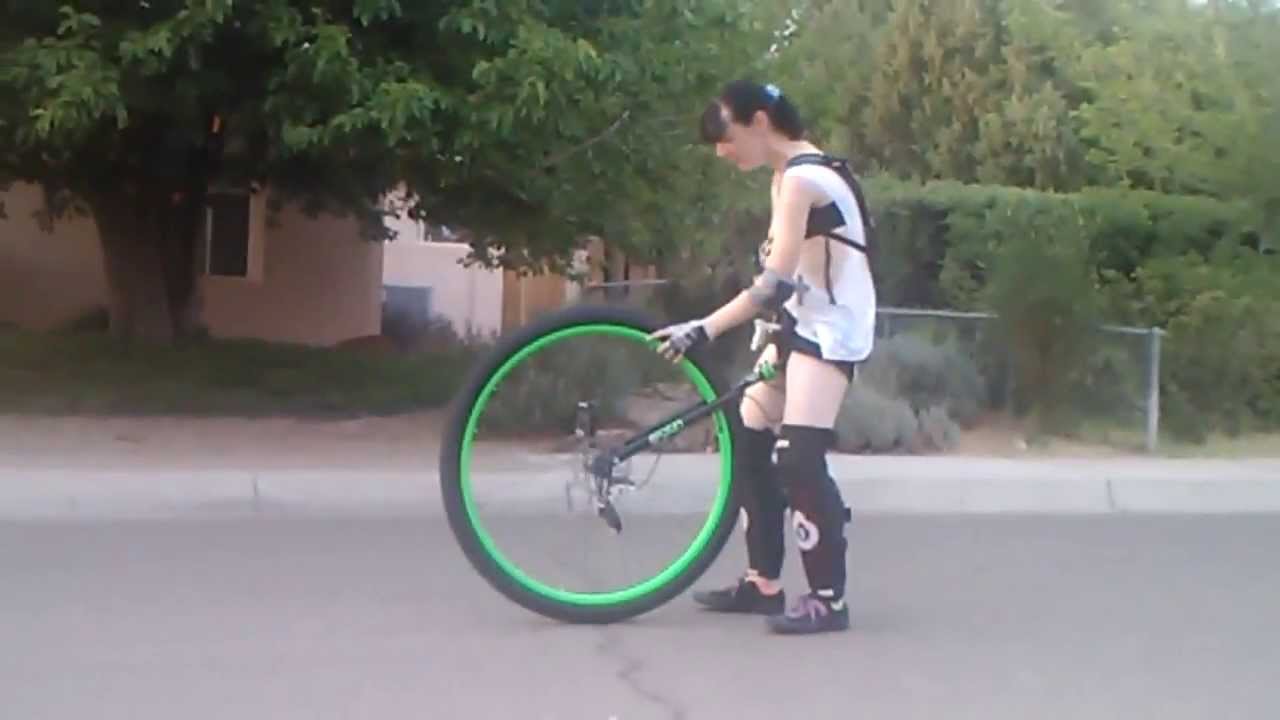I’d like to give you some of my thoughts if I may. Since it’s from my perspective during the learning period of doing that.
A few important things I learned for the free mount is to fall well. I made it my objective at first to just jump over the seat and land on the other side and have my hand ready to quickly catch the seat. Once you have that, I say you can practice to your hearts content. Since letting your unicycle fall is, in a sense, letting yourself fall. At least to me, I feel like the unicycle is part of me so I try my best to catch it and keep it from harm.
Okay, now lets say you have issues jumping over the unicycle. I approached this by first standing in a grassy area. Then you’re not worried about the fall as much. This is your “building your jump confidence” moment. You just do whatever it takes to jump over your unicycle and land on the other side. After you land it a few times, you can keep going. You can continue to do this till you’re starting to think “hey, this is nothing, piece of cake, I want more of a challenge”. I think learning has to do a lot with mind tricks and some practice to back it up of course.
So once you get to that. In my opinion, I would suggest you practice on a flat area instead of a slope. Sure the slope helps you by giving you that extra roll. But I think that it also distracts you because when you roll and the unicycle moves, it’s not all on you, it’s also partially due to something not in your own power. I think you should learn with full control of your unicycle and only you should have that control, not give it to anything else. It’ll give you concentration and confidence in your own movement.
Once I found a nice flat area like a parking lot with few or no cars, I start doing mounts. But then I notice I tend to jump over the unicycle too much. I was starting to get frustrated. Practiced a bunch more, barely landing it. The confidence that you learn in the grass area transfers here. Due to that, I found that sure the unicycle was difficult to mount due to the massive height and because we’re short which doesn’t exactly help. BUT, confidence and skill makes up for it. With that confidence, I found myself much more committed to hop over the unicycle and that makes a world of difference. Confidence that I’m able to catch the unicycle and confidence that I was able to jump over the unicycle before, it makes your hop stronger.
Now, before I continued making more failed mounts, I take a good long breath and concentrate. I think one of the biggest issue with practicing is that sometimes after failing so many times, we go into a “eh whatever I’m just doing it because I’m doing it” or “I wonder what’s going on in the house” moment. At that point it’s just practicing just to say you’ve practice and that’s not good. It’s not completely worthless, but it shouldn’t be what you want.
So think hard to yourself and plan it out. If you usually fall to the right, see which way you originally point your unicycle and move it a bit in either direction and see if that changes it. Maybe add a little swerve. Just have it planned out. Try not to repeat a mistake.
Awhile back someone also pointed out that after a good day’s practice, sleeping it off and letting your mind and body soak it in is a great idea. That’s another thing I also learned, not to push myself too hard and sometimes, resting your mind and body is as good as practicing all day long.
And in the end, pure concentration and relentless effort usually does the trick. You just gotta have fun too. Awhile back I thought how it would be cool to be able to master unicycling. But then I was also afraid, unicycling is fun because of the new things to learn, but then again ppl would say there’s always something else to learn, but I think that’s for the extreme end of the sport which big technical trails and taking big risks and so forth. Not all of us are interested in that. So take this opportunity to enjoy it because there’s still something interesting to learn.
